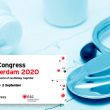Symptomatic patients undergoing PCI with no residual ischemia confirmed by iFR have superior symptom improvement at one year vs. patients who did not receive the optimization. In addition to symptoms, patients receiving iFR optimization (final value ≥ 0.95) presented lower cardiac mortality, spontaneous MI or clinically justified revascularization vs. patients with <0.95 final value. ...
TCT 2020 | Crushed Prasugrel Administration prior PCI
Prehospital administration of crushed tablets of prasugrel loading dose in the ambulance while patient is on his way to primary PCI does not improve reperfusion markers compared against uncrushed tablet administration according to the COMPARE CRUSH, presented at the virtual TCT 2020 and simultaneously published in Circulation. There were no differences in TIMI flow of...
TCT 2020 | Prophylactic Angioplasty for Vulnerable Plaques
Patients with vulnerable plaque identified by means of intravascular ultrasound (IVUS) and near-infrared spectroscopy (NIRS) are at a significantly increased risk of adverse cardiovascular events. Revascularization of these vulnerable lesions could prevent clinical events. That is the theory behind prophylactic angioplasty, which still needs to be proven in clinical practice. The PROSPECT ABSORB study, nested...
Complex PCI: Complex Characteristics Impact Results
Patients with a bigger number of complex anatomical characteristics that increase PCI complexity have worse results at one-year followup. These data come from a large multicenter study (e-Ultimaster) recently published in EuroIntervention. The more complex the characteristics, the greater the increase in events. It is important to see past the obvious anatomical challenges (bifurcations, calcification,...
Death, Stroke, and Hospitalization while Waiting for TAVR
The consequences of deferring transcatheter aortic valve replacement (TAVR) procedures because of the COVID 19 pandemic are piling up. Untreated severe aortic stenosis patients who had been scheduled for TAVR are seeing increased risk of all events, even mortality. According to recent studies published in JAMA, deferring TAVR in patients with symptomatic aortic stenosis is...
Post TAVR ASA Monotherapy Consolidates
This meta-analysis to be published in J Am Cardiol supports the use of aspirin monotherapy (ASA) after transcatheter aortic valve replacement (TAVR). The use of aspirin alone is associated to less bleeding without increased ischemic events such as strokes or mortality. The combined outcomes of four studies, including the recently published POPular TAVI (cohort A),...
SOLACI PERIPHERAL | 4th Clinical Case: Thoracic Aortic Dissection in Patient with Complex Arch
A new clinical case to keep learning with colleagues! Today, we present a Thoracic Aortic Dissection in Patient with Complex Arch. This is the 4th case for SOLACI Peripheral, which continues its mission: to deepen knowledge exchange among Latin American interventional cardiologists. Tell us what you think about this case using the comments section in this...
ESC 2020 | Post PCI Trimetazidine: No Adverse Events or Great Benefits
Trimetazidine in addition to optimal medical therapy in patients undergoing coronary PCI does not change events rate at long term. The ATPCI study was presented at ESC 2020 and simultaneously published in the Lancet. This study randomized coronary PCI patients with stable or acute NSTEMI coronary syndromes to trimetazidine vs. placebo. What is the rationale...
Can Aspirin Use Be Interrupted After Angioplasty?
Aspirin discontinuation 1 to 3 months after angioplasty with continued P2Y12 inhibitor therapy reduces the bleeding risk without an increase in thrombotic events. This is also the case for patients admitted with acute coronary syndrome. Dual antiplatelet therapy with aspirin and a P2Y12 inhibitor has been shown to reduce the risk of major events compared with...
SOLACI PERIPHERAL | 3rd Clinical Case: Femoral PCI
In keeping with its Clinical Case Discussion Program, SOLACI’s peripheral interventions department, SOLACI Peripheral, presents the third clinical case, to promote knowledge exchange across the entire Latin American hemodynamics community. Share your thoughts on case and resolution in the comments and answer the questions at the end of the article. Femoral PCI Authors: MD Mauricio Cavalieri...








